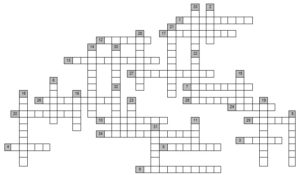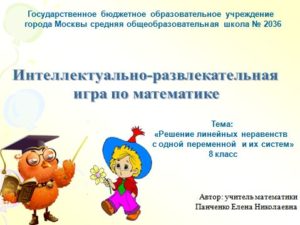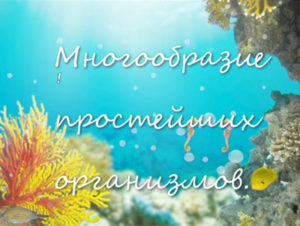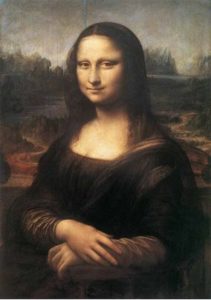MBOU "Komsomolskaya No2 SOSH"
Altai Territory, Pavlovsk R-on,
pos. Harvesting
This lesson is presented for generalization and systematization of knowledge on the topic: “The human body”. Children love learning through play, so this is the form of generalization I took to this lesson. I use the game very often in my biology classes. Through emotions, even the weakest child remembers and takes with him the information received in the lesson. The game situation contributes to a faster and more accessible assimilation of knowledge and skills. This lesson is suitable for children of the 8th grade (general education program of schools) when studying anatomy.
The goal of the game is to find out the knowledge of children in the field of knowledge of anatomy and features of the structure of the human body, determine their abilities, draw the attention of children to new interesting issues, and also help to assimilate additional material.
Aims and objectives of the training session:
- summarize and consolidate the material passed, fill gaps in students’ knowledge on the topics passed;
- to form skills of individual and group forms of activity, skills of cooperation with classmates;
- develop the ability to solve puzzles and puzzles, analyze, compare and draw conclusions;
- nurture cognitive interest, the need for knowledge, self-education, the desire for creativity.
Type of lesson:Summarizing repetition using:
- test control;
- game technology;
- group work.
Equipment:
- multimedia projector;
- play
- handouts for teams.
Lesson structure:
- Organizational moment.
- Introductory speech of the teacher (the meaning of the material of the studied topic, the message of the goal and the lesson plan).
- Presentation of student groups (title and motto).
- Performing students of various kinds of oral and written tasks of a generalizing and systematizing nature, developing skills, forming conceptual knowledge, based on facts and phenomena.
- Verification of the work, adjustment (if necessary).
- Formulation of conclusions on the studied material.
- Evaluate the results and summarize the lesson.
- Reflection.
Preparatory work:
- The class is divided in advance by the teacher into groups approximately the same level of knowledge.
- Groups are invited to come up with a name and motto.
- Repeat material on the topic covered by topics.
Class progress:
1. Organizational moment
Focusing on the unusualness of this lesson.
2. Teacher's opening remarks
We have completed the study of the structure of the human body and today we have the final repetitive-generalizing lesson-game on the topics studied and you are not ordinary students, but “connoisseurs-theorists”. You are divided into groups, each group specializes in the knowledge of certain organs and systems of human organs.
The team must present its team and captain.
Group 1 - ...
Group 2 -
Group 3 - ...
Evaluate your work and keep a strict record of your points will be respected by the jury.
Competition 1. Mysteries.
Students are invited not just to guess puzzles, but to name the class (detachment) of the animal. For a correctly guessed animal - 1 point. For properly named class (detachment) – 1 point
I offer you guys interesting puzzles.
Who knows the answer to the riddle, quickly raises his hand.
Those who are familiar with anatomy, there are no mysteries.
Whoever solves the mystery gets points immediately.
As soon as you collect all the points, you will take the prize with you.
In a moment, contact oxygen.
Maybe he's the only one.
It lives in red blood cells.
What's your name? ?Hemoglobin.)
This organ is pushing blood.
The organ is in charge, everyone knows.
And inside is a door valve.
What organ? This is...heart).
He's used to good food.
The organ of taste is ours.tongue).
Food in the body is broken down.
They become simple substances.
Food is absorbed.
And the fault... ?digestion).
We remove it from the lungs.
We breathe out every time.
Your body doesn't need it.
This is...carbon dioxide).
We all breathe lungs.
But she's a little too,
Our heat regulator...
What is this about? Oh...skin).
Food goes into your mouth.
Throat, next.esophagus).
Quite the contrary.
Absorbing.oxygen).
Again and again:
Oxygen is spreading... ?blood).
Stop, germs! No move!
I have...immunity.)
Time for us guys.
Put dots on i.
In the allocation system
The most important organ -kidney).
The body is a support.
But it's no worse.
He's in horror,
It's called ...skeleton).
If you walk hard,
You write clearly in your notebook.
Who helped us so much?
At work... ?cerebral).
Competition No. 2 "Fourth Extra"
I want to bring to your attention the game tasks. Their essence lies in the fact that among the four words or phrases "hidden" one superfluous in meaning. You need to find it and explain why it is unnecessary. From the first letters of “extra” words, a new one is formed, which also needs to be explained.
Subject: "Tissues"
|
|
|
|
(Blood)
Topic: “Organ systems”
|
|
|
|
||||||||
|
|
|
(Thalamus)
Physcultminute.
You must be tired.
Now the guys are up!
Hands up quickly,
Sideways forward, back,
Turn right, turn left.
Sit down, back to work.
Competition 3 Rebus
See presentation
Competition No. 4 “One for All, All for One”
1. The volume of this fluid in the human body is about 5 liters(blood).
2. Every day, an adult produces about 20 liters of this fluid.(primary urine)
3. A person giving blood for transfusion or tissues and organs for transplantation to another person(donor)
4. Introduction into the body of serum of infected animals or a sick person(immunity).
5. The vessels through which blood moves from the heart(arteries)
6. Carbon-rich blood(venous).
7. The path of blood from the left ventricle through the arteries, capillaries and veins of all organs to the right atrium(large circle)
8. What is the name of a disease that occurs with a prolonged lack of vitamin in the human body?(vitaminosis)
9. What vitamin is produced in the human body under the influence of sunlight(Vitamin D).
10. In ancient Eastern fairy tales, sick princesses were often recommended to treat raw liver animals, and what is the point in this?? (hemoglobin increases).
11 What is the name of the unit of kidney(nephron)
12. What are the horny skin formations called?(nails).
13 How many chambers are in the human heart?(four)
14. What is the connection between muscles and skeleton?(tenants)
15. The body that determines the taste of food(language).
16 The organ in which food begins to be digested(stomach).
17. Which kingdom of living nature does man belong to?(to the animal kingdom)
18. Name the three smallest bones of our body(strap, anvil, hammer).
19. What light do the receptors of the eye perceive - rods and cones?(daylight and twilight).
20. What about the central nervous system?(brain and spinal cord).
21. What about the peripheral nervous system?(nerves and nerve endings).
22. What is the name of the balance organ?(vestibular apparatus).
23. Name the most mobile bone of the facial skeletal region of the head(lower jaw)
24. What is the name of a cell that is a unit of the structure of nervous tissue?(neuron)
Taking stock.
{module Google_kvadrat}
List of references:
- Balobanova V.V. Maksimtseva T.A. “Subject weeks in school – biology, ecology, healthy lifestyle”. Volgograd 2001.
- Zverev I. D. “A book for reading on human anatomy, physiology and hygiene”. Education 1978.
- Krdjieva L "Home blanks" Minsk.1992
- Petrovsky K.S. Belousov D.P., Belyaeva A.S. Smirnova N.N. “Vitamins all year round” M. Rosselkhozizdat 1985
The game lesson and presentation can be downloaded





